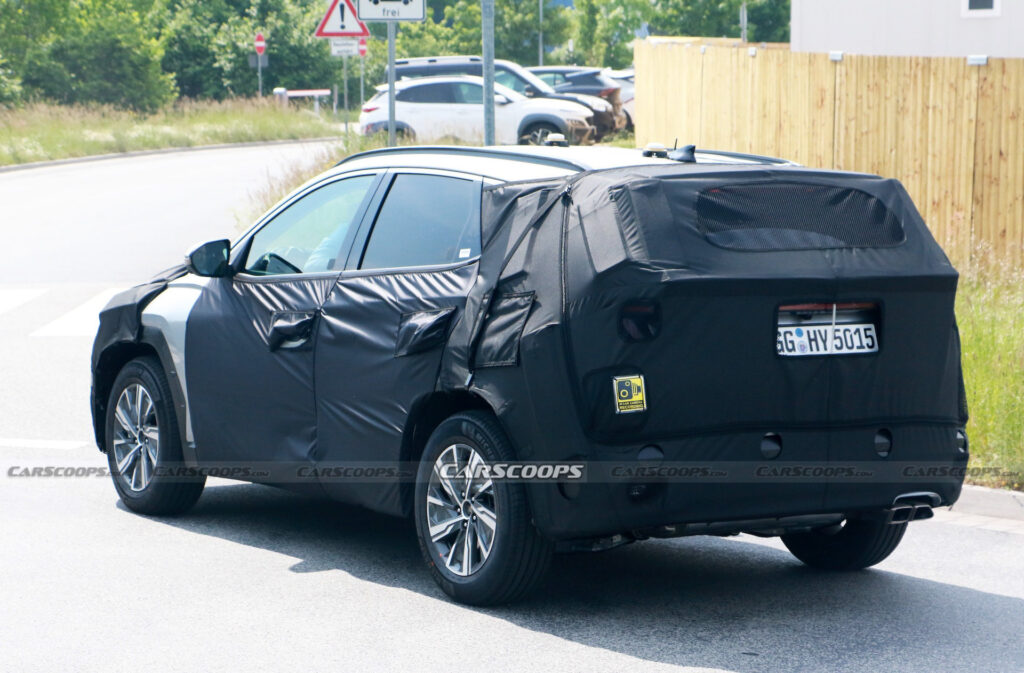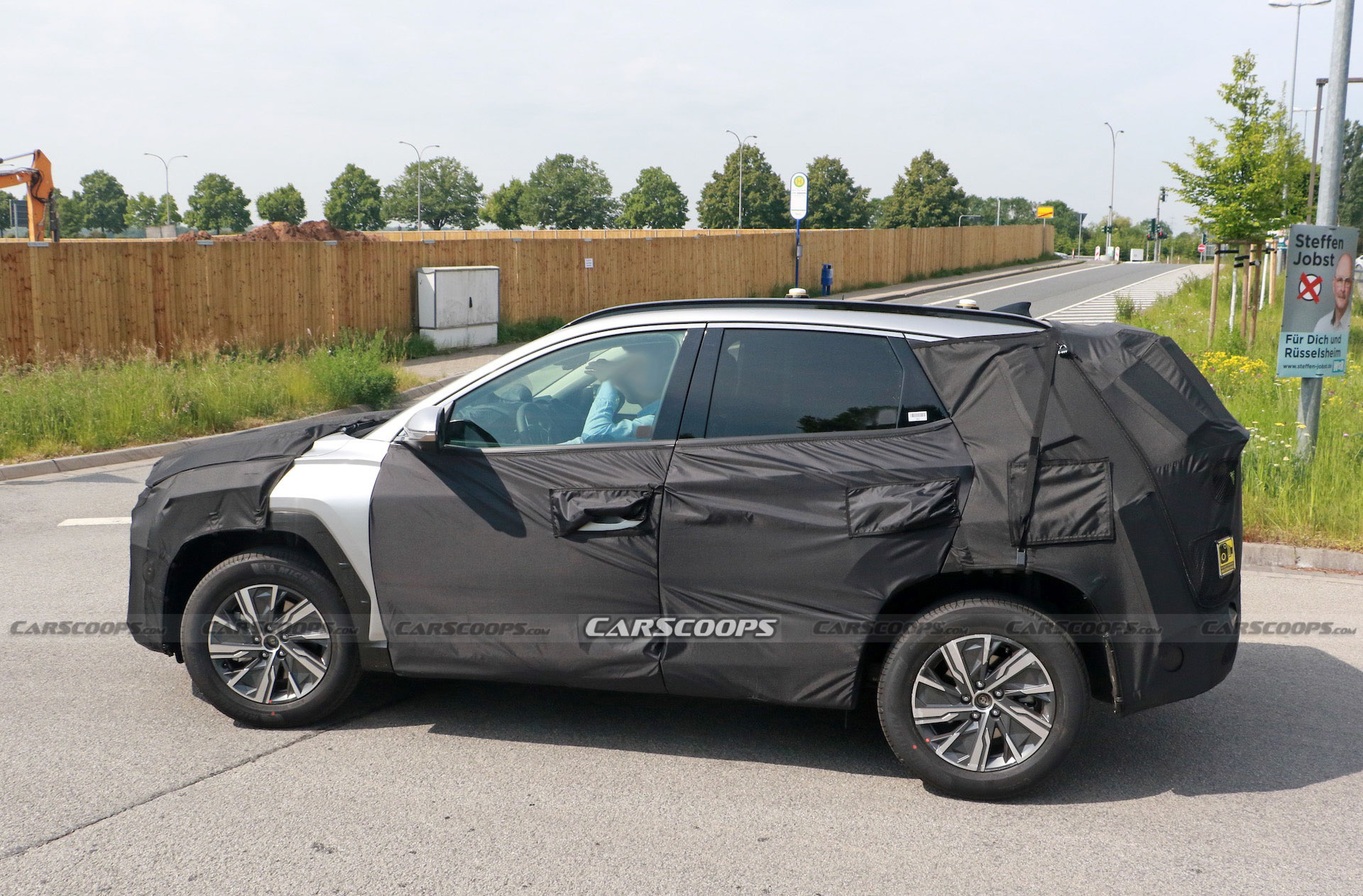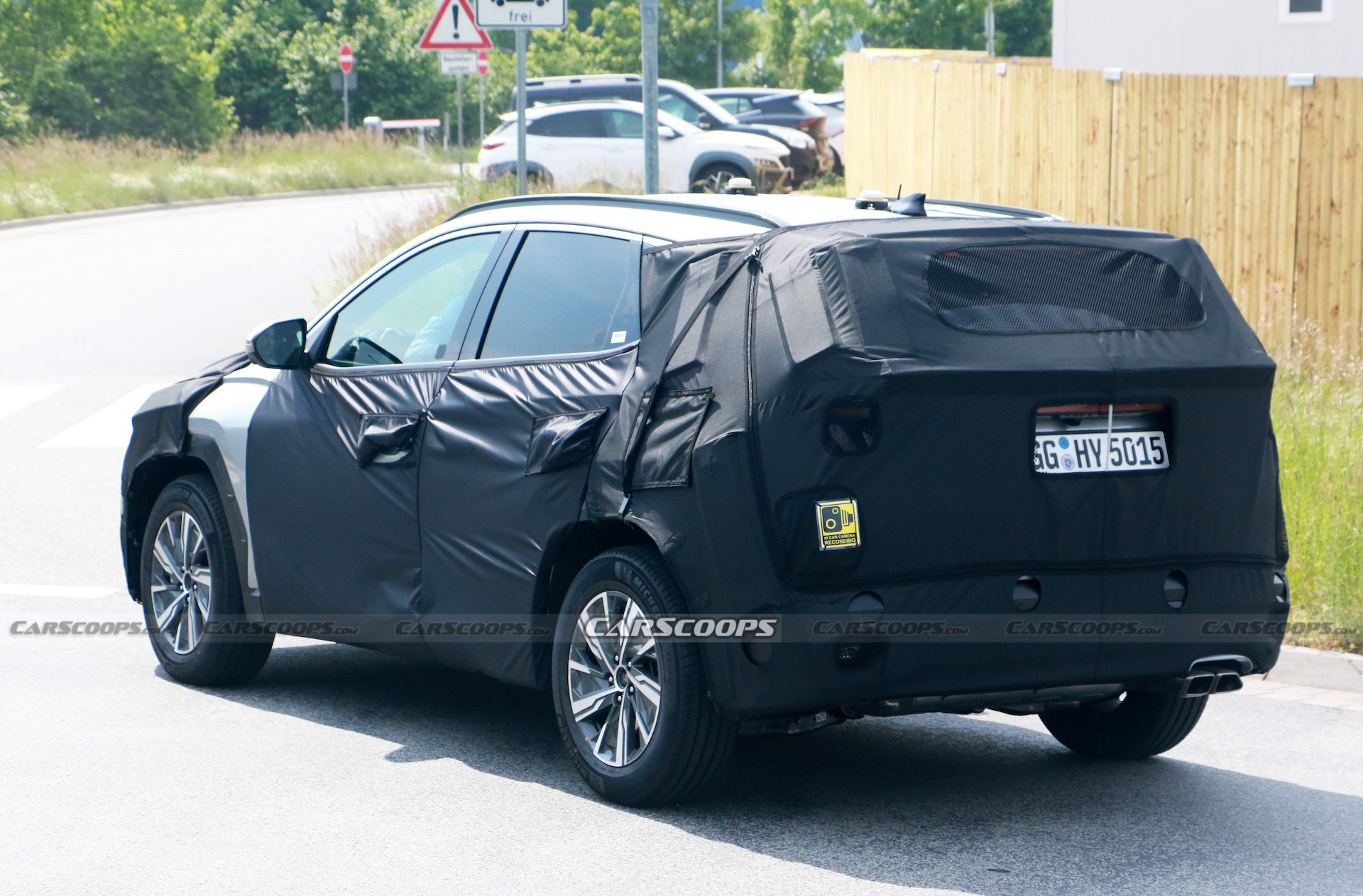Hyundai’s Tucson is one of the most distinctive looking compact SUVs on the road, but this September will mark three years since we clapped our shocked eyes on the fourth-generation model, which leads us to think Hyundai will pull the covers off a facelifted version this fall with a launch set for next year, either as a 2024MY or 2025MY.
With four months to go though, the covers are very definitely still on. Our spy photographers snapped a Tucson prototype testing in Germany wearing the kind of massive disguise we normally associate with cars we won’t see for a long time time or which have a ton of new things to keep hidden.
But since we’re only talking about a mid-life nip and tuck, the external changes are likely to be limited to new lights and bumpers. We can see from the exposed bits of front fender and window and waistline shape that there aren’t any big metalwork updates in store. The grille pattern looks to be different, though we can’t be sure if what we can see is the finished item, and the headlights are too obscured for us to see what’s going on under the camouflage, though we suspect mods will be limited to a new DRL design.
More: Hyundai, Kia To Pay $200 Million To Settle Class Action Lawsuit Over TikTok Inspired Thefts

Could those DRLs be stretched right across the front of the Tucson’s grille? We’d say that’s a strong possibility given that the facelifted Elantra was just given a similar update and that a full-width light bar is now a popular design feature on several Hyundai models, including the new Kona.
As for what’s going on at the back, that’s anyone’s guess. Hyundai has certainly gone to great lengths to make sure we can’t find out. The fang-style rear light layout on the current car is among the Tucson’s most memorable design details so we’d be surprised if it was abandoned.
And by a similar token, we’d expect the engine lineup to close match what’s on offer in today’s Tucson. That means European buyers shopping at the lower end of the price ladder will probably continue to get a choice of 1.6-liter petrol engines making either 148 hp (150 PS) in FWD guise, or 178 hp (180 PS) with AWD drivetrains, both of those coming with mild hybrid assistance. Customers with deeper pockets can opt for two other 1.6s with more electric help, the decision coming down to a 226 hp (230 PS) full hybrid or 261 hp (265 PS) PHEV.
Things are simpler (and more powerful) in the U.S. where the Tucson is currently available with the full hybrid and PHEV options, but offers a 187 hp (190 PS) 2.5 liter four for lower-spec cars instead of the mild-hybrid 1.6s sold in Europe.






















